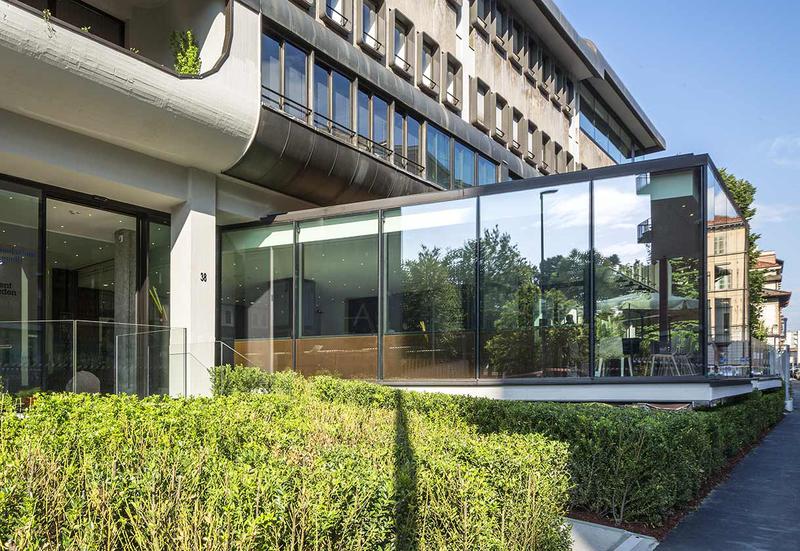AGNELLI FOUNDATION
-
For the redesign of Agnelli Foundation headquarters, Carlo Ratti Associati has developed a personalized heating, cooling and lighting system which follows occupants as they move around the building, like an individually-tailored environmental bubble. The system gives shape to a workplace that naturally learns and is synchronized to its users’ needs, thus optimizing space usage and limiting energy waste. Designers and researchers at Carlo Ratti Associati equipped the century-old structure in the city center with Internet of Things (IoT) sensors that monitor different sets of data, including occupancy levels, temperature, CO2 concentration, and the status of meeting rooms. Based on this information, the building management system (BMS) responds dynamically, adjusting lighting, heating and air-conditioning.
Once building occupants set their preferred temperature via a smartphone app, a thermal bubble follows them throughout the building, as the fan coil units, situated in the false ceilings, are activated by human presence. When an occupant leaves a given space, the room returns naturally to ‘standby mode” and saves energy. By synchronizing energy usage and human occupancy within buildings we can create a more sustainable and responsive architecture – theoretically slashing energy consumption by up to 40%.
The knowledge of internal occupancy also allows to reconfigure offices over time. The new workplace will also feature a set of movable glass walls, sound-absorbing curtains, and foldable partitions made of wooden panels, all of them permitting endless reconfiguration of the interior. Hence a large open space can quickly turn into a series of small meeting rooms – each of them with its own individually-customizable thermal bubble.This kind of flexibility is essential to the building, which will contain not only the headquarters of the Agnelli Foundation, but also a co-working space, a Fab Lab, workshop areas for students and entrepreneurs and a café.
In the last decade, mobile apps such as Foursquare have changed the way we experience open-air urban space. The Agnelli Foundation project aims at transferring the bottom-up approach of these mobile apps to the workplace, fostering creativity and productivity in the office and creating new communities at the intersection of physical space and digital information.
Photo credits: Beppe Giardino
1870 Projects










